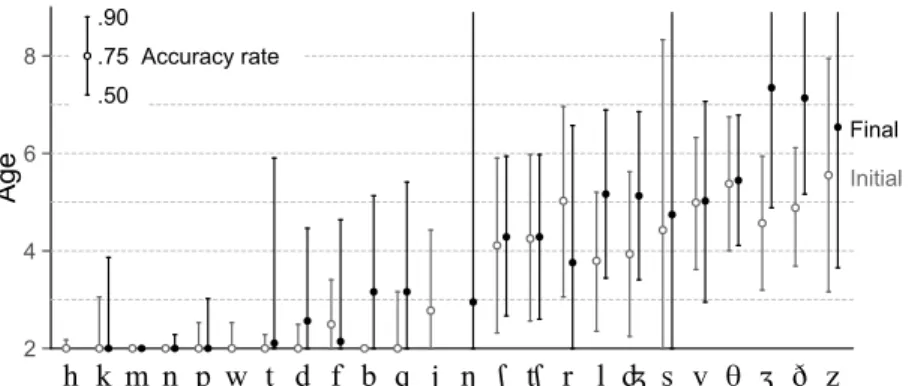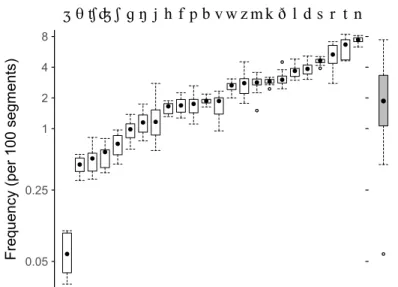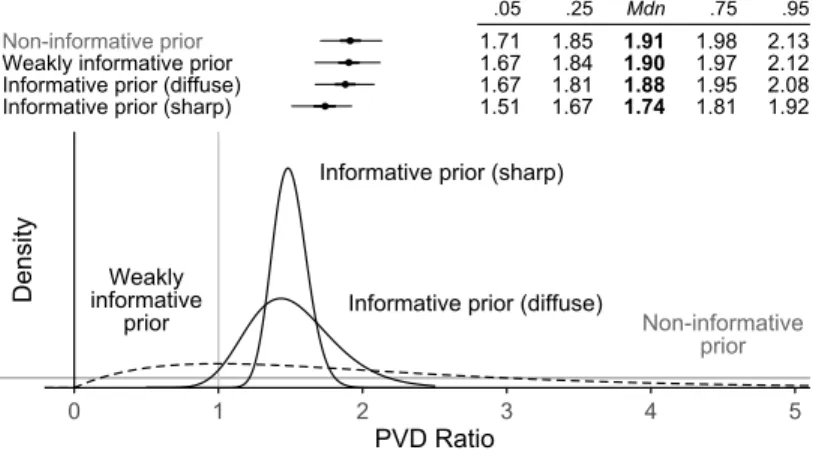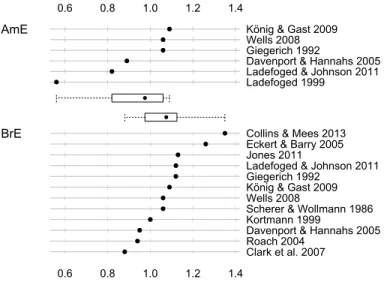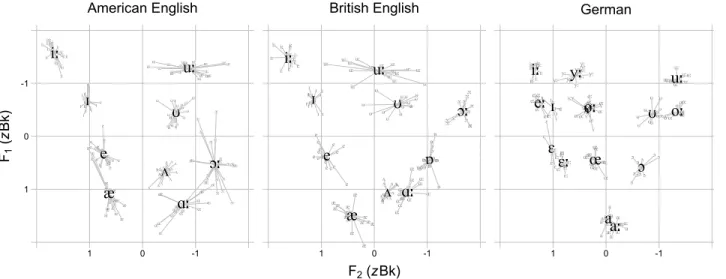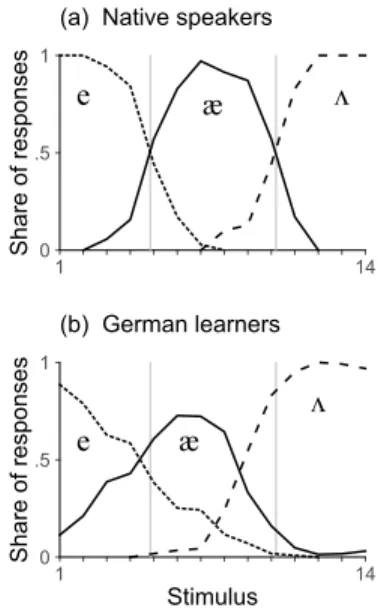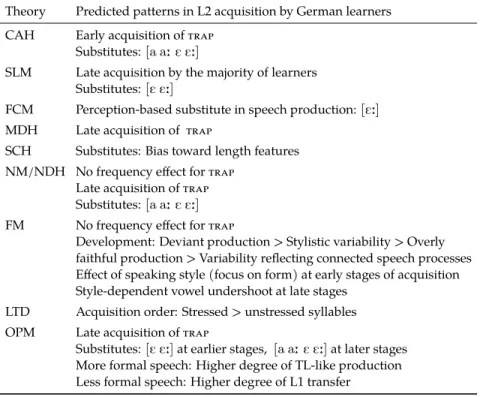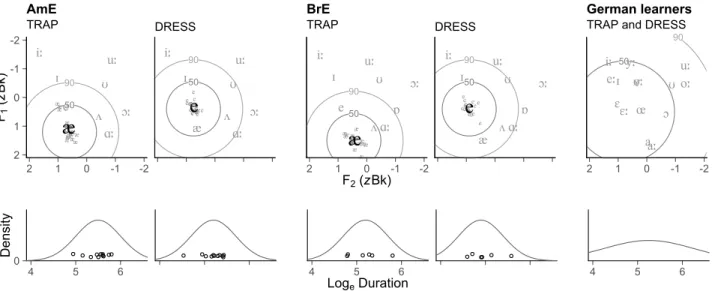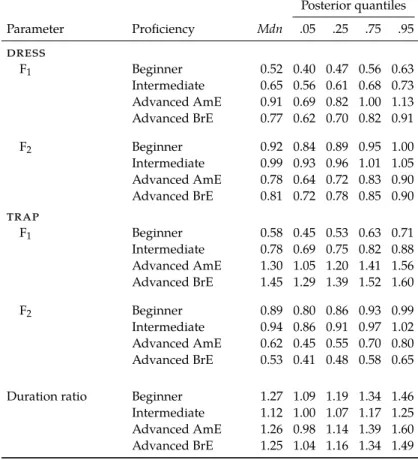Phonological variation in German Learner English
Lukas Sönning
Phonological variation
in German Learner English
Bibliographische Information der Deutschen Nationalbibliothek
Die Deutsche Nationalbibliothek verzeichnet diese Publikation in der Deutschen Nationalbibliographie; detaillierte bibliographische Informationen sind im Internet über http://dnb.d-nb.de/ abrufbar.
Diese Arbeit hat der Fakultät Geistes- und Kulturwissenschaften der Otto-Friedrich-Universität Bamberg als Dissertation vorgelegen.
Gutachter: Prof. Dr. Manfred Krug Gutachterin: Prof. Dr. Ulrike Gut
Tag der mündlichen Prüfung: 1. Dezember 2017
This title can be downloaded at:
https://fis.uni-bamberg.de/handle/uniba/49135
©2020, Lukas Sönning
Published under the Creative Commons Attribution 4.0 Licence (CC BY 4.0, http://creativecommons.org/licenses/
by/4.0) except for figures: CC BY 4.0 terms only apply to images with the symbols in the figure caption.
Typesetting: Lukas Sönning
Typesetting software: This book was typeset with LuaL
ATEX using
Texmaker(Brachet 2018) and the
Rpackage
book- down(Xie 2016); the design is based on the Tufte-L
ATEX document classes (http://code.google.com/p/tufte-latex/).
URN: urn:nbn:de:bvb:473-irb-491352 DOI: http://dx.doi.org/10.20378/irb-49135
Open Science Framework (OSF) repository: https://osf.io/2pdh6/
Source code available from https://osf.io/gnzu4/
This book grew out of a dissertation project at the University of Bamberg.
I would like to thank my supervisor, Manfred Krug, for his guidance and patience, and for giving me the freedom to develop my ideas. I am also grateful for being part of a team of colleagues who turned my work at the department of English linguistics into a delightful and rich experience.
My gratitude also extends to Ulrike Gut, who co-supervised the present thesis and offered helpful and constructive feedback throughout. Special thanks are due to Robert Fuchs for reading an earlier version of this book, and for many thoughtful comments and suggestions.
I would also like to thank my colleagues, past and present, for the warm and productive atmosphere and the extraordinary team spirit: Katharina Beuter, Urška Grum, and Michaela Hilbert for generous support at the coal-face of teaching; Fabian Vetter for the computational infrastructure;
Julia Schlüter, Ole Schützler, and Valentin Werner for setting academic examples and providing challenging and stimulating input.
I am grateful to Graham Pascoe, Isabell Rank, and Christina Wunder for allowing me to (re)analyze and share their data. Thanks also to Gunter Narr Verlag Tübingen, for permission to adapt and use images which first appeared in Wieden & Nemser (1991).
The present work relies heavily on open source software tools, most notably
R(R Core Team 2020) and
RStudio(RStudio Team 2020). To draw the many graphs that appear in this book, I relied almost exclusively on the
latticepackage developed by Deepayan Sarkar (2008). Paul Bürkner’s (2017) fabulous
brmspackage eased the transition to the
Stanprogramming language (Stan Development Team 2018). The
Rpackages
bookdown(Xie 2016) and
kableExtra(Zhu 2020) provided invaluable assistance with typesetting the book in Tufte-L
ATEX, a package to imitate the layout of Edward Tufte’s books (created by Kevin Godby, Bill Kleb, and Bill Wood).
Finally, I would like to thank my family and friends for their support;
above all my wife Katharina, for embracing the ups and downs of this
project. For full disclosure, I should mention that we met in the
Introduction to English Linguistics, which was taught by Manfred Krug, who then hiredboth of us as student assistants and set the ball rolling.
List of abbreviations AmE American English AOL Age at onset of learning
AS Articulatory Settings (Honikman 1964)
Bk Bark
BrE British English
CAH Contrastive Analysis Hypothesis (Lado 1957)
DEuclidean distance
DBk
Euclidean distance between vowels in Bark units
DzBk
Euclidean distance between vowels in Lobanov-normalized Bark units (z-scores)
∆ Absolute difference on the proportion scale
∆
BkDifference between formants in Bark units
∆
HzDifference between formants in Hertz units DH Desensitization Hypothesis (Bohn 1995) DST Dynamic Systems Theory (De Bot et al. 2007) F
1First formant
F
2Second formant FAR Foreign accent rating
FCM Feature Competition Model (Hancin-Bhatt 1994)
FM Functional Model of Phonological Acquisition (Boersma 1998) FVO Final voiced obstruent
GDM Gradual Diffusion Model (Gatbonton 1978) GLE German Learner English
Hz Hertz
IL Interlanguage
IPA International Phonetic Alphabet L1 First language
L2 Second language
LTD Linguistic Theory of L2 Phonological Development (James 1988)
MAgeAverage age
MDH Markedness Differential Hypothesis (Eckman 1977)
Mdn
Median
MSA Model of Segmental Acquisition (Colantoni & Steele 2008) MSV Model of Sociolinguistic Variation (Fasold & Preston 2007)
nNumber of units/sample size
NDH Naturalness Differential Hypothesis (Schmid 1997)
NM Natural Model of L2 Phonological Acquisition (Dziubalska-Kołaczyk 1990b) OPM Ontogeny Phylogeny Model of Second Language Acquisition (Major 2001) OT Optimality Theory (Prince & Smolensky 1993)
PAM Perceptual Assimilation Model (Best 1995) PIM Phonological Interference Model (Brown 1998) SCH Structural Conformity Hypothesis (Eckman 1991) SHG Standard High German
SD
Standard deviation
SDRH Similarity Differential Rate Hypothesis (Major & Kim 1996) SLA Second Language Acquisition
SLM Speech Learning Model (Flege 1995)
SpILSpoken Interlanguage corpus (Pascoe 1987) TL Target language
U Universal
UG Universal Grammar
zBk
Bark measurements converted to
z-scores (using the method proposed by Lobanov 1971)1 Introduction 1 2 L2 phonological acquisition: Theoretical work 5
2.1 Preliminary remarks . . . . 5
2.2 Cross-linguistic influence . . . . 6
2.3 Language universals . . . . 13
2.4 Development and variation . . . . 26
2.5 Summary . . . . 33
3 Method and data 37
3.1 Materials and procedures . . . . 37
3.2 Subjects . . . . 38
3.3 Supplementary data . . . . 40
3.4 Data analysis . . . . 43
3.5 Constraints on generality statements . . . . 51
3.6 Presentation of results . . . . 52
4 The trap-dress contrast 53
4.1 Contrastive analysis . . . . 53
4.2 L2 acquisition of English trap: Linguistic factors . . . . 60
4.3 L2 acquisition of trap: Theoretical predictions . . . . 63
4.4 English trap in German Learner English: Previous work . 66 4.5 Aims of this study . . . . 71
4.6 Method and data . . . . 72
4.7 Constraints on generality . . . . 74
4.8 Results . . . . 75
4.9 Summary and discussion . . . . 80
5 Laterals: Clear and dark /l/ 87
5.1 Contrastive analysis . . . . 87
5.2 L2 acquisition of clear and dark/l/: Linguistic factors . . . . . 93
5.3 L2 acquisition of clear and dark /l/: Theoretical predictions . 96 5.4 Laterals in German Learner English: Previous work . . . . . 99
5.5 Aims of this study . . . 104
5.6 Method and data . . . 105
5.7 Constraints on generality . . . 107
5.8 Results . . . 107
5.9 Summary and discussion . . . 110
6 English /r/ 115
6.1 Contrastive analysis . . . 115
6.2 L2 acquisition of /r/: Linguistic factors . . . 118
6.3 L2 acquisition of English /r/: Theoretical predictions . . . 122
6.4 English /r/ in German Learner English: Previous work . . . 125
6.5 Aims of this study . . . 129
6.6 Method and data . . . 132
6.7 Constraints on generality . . . 136
6.8 Results . . . 136
6.9 Summary and discussion . . . 142
7 The labio-velar glide /w/ 149
7.1 Contrastive analysis . . . 149
7.2 L2 acquisition of English /w/: Linguistic factors . . . 150
7.3 L2 acquisition of English /w/: Theoretical predictions . . . . 152
7.4 English /w/ in German Learner English: Previous work . . . 154
7.5 Aims of this study . . . 156
7.6 Method and data . . . 157
7.7 Constraints on generality . . . 159
7.8 Results . . . 160
7.9 Summary and discussion . . . 162
8 The labiodental fricative /v/ 167
8.1 Contrastive analysis . . . 167
8.2 L2 acquisition of /v/: Linguistic factors . . . 169
8.3 L2 acquisition of English onset /v/: Theoretical predictions . 174 8.4 Onset /v/ in German Learner English: Previous work . . . . 176
8.5 Aims of this study . . . 178
8.6 Method and data . . . 179
8.7 Constraints on generality . . . 181
8.8 Results . . . 181
8.9 Summary and discussion . . . 183
9 Dental fricatives 187
9.1 Contrastive analysis . . . 187
9.2 L2 acquisition of dental fricatives: Linguistic factors . . . 189
9.3 Acquisition of dental fricatives: Theoretical predictions . . . 192
9.4 Dental fricatives in German Learner English: Previous work . 194 9.5 Aims of this study . . . 199
9.6 Method and data . . . 200
9.7 Constraints on generality . . . 201
9.8 Results . . . 202
9.9 Summary and discussion . . . 205
10 Final voiced obstruents 211
10.1 Contrastive analysis . . . 211
10.2 L2 acquisition of FVOs: Linguistic factors . . . 214
10.3 L2 acquisition of FVOs: Theoretical predictions . . . 220
10.4 FVOs in German Learner English: Previous work . . . 223
10.5 Aims of this study . . . 227
10.6 Method and data . . . 228
10.7 Constraints on generality . . . 230
10.8 Results . . . 230
10.9 Summary and discussion . . . 235
11 L2 phonological theory and data 239
11.1 Interlanguage variation and L2 phonological theory . . . 239
11.2 From theory to data… . . . 242
11.3 … and back again . . . 244
11.4 Concluding remarks . . . 246
A Appendix 247
A.1 Materials for the recordings . . . 247
A.2 Calculation of variety scores . . . 250
A.3 The trap-dress contrast . . . 251
A.4 Laterals . . . 264
A.5 Prevocalic /r/ . . . 271
A.6 Postvocalic /r/ . . . 275
A.7 The labio-velar glide /w/ . . . 284
A.8 The labiodental fricative /v/ . . . 290
A.9 Dental fricatives . . . 299
A.10 Final voiced obstruents: Acoustic analysis . . . 306
A.11 Final voiced obstruents: Auditory analysis . . . 311
B Bibliography 319
Introduction
The study of second language (L2) speech is concerned with the descrip- tion and explanation of the sound systems acquired by non-native speakers.
Over the past 60 years, the field has profited from insights gained across a range of disciplines including linguistics, the cognitive sciences and education. As a result, L2 speech is studied from a wide range of perspec- tives, which is reflected in the state of theoretical knowledge about the acquisition of an L2 sound system.
Current approaches to L2 phonology view learner speech as an au- tonomous system in the sense that its organization is to a certain extent independent of the target language (TL) and the learner’s native language
(L1). This assumption is captured by the term
interlanguage1(IL), which
1The terminterlanguagewas introduced independently by Corder (1967), Nemser (1971a), and Selinker (1972).refers to the L2 system internalized by a learner. It is the objective of the field of L2 phonological acquisition to advance our understanding of the factors that constrain and systematically shape IL variation.
A broad distinction can be made between learner-related and linguistic constraints. The former, which are often summarized under the label
individual differences, are operative through the personality and experienceof the learner and include attributes such as language aptitude, age at onset
of learning (AOL), and TL experience.
2The second class of constraints
2See Piske et al. (2001) for an overview.turns to linguistic constructs to account for systematic patterns of variation in learner speech. These mainly revolve around two notions: (i) cross- linguistic influence, which describes the way in which learner speech is constrained by the native language, and (ii) language universals, where the focus is on influences that are universal in the sense that they operate independently of the L1 and TL.
This study concentrates on linguistic constraints and pursues two general aims. The first is to survey theoretical work on L2 phonology from an empirical perspective. Theoretical contributions are reviewed and applied to a diverse set of segmental structures in German Learner English (GLE). The second aim is to offer empirical insights into phonological variation in GLE in the domain of vowels, sonorants, and obstruents.
Accordingly, this book is structured as follows.
Chapter 2 surveys existing theoretical work on L2 speech learning.
In total, twenty contributions are evaluated with regard to their tenets,
predictive scope, and the type of IL variation they account for. It will be
argued that the latter aspect offers a new and fruitful perspective on the
theoretical landscape and is of relevance for the interaction between theory and empirical research.
Chapter 3 gives a general outline of the methodology and data used.
This includes a description of materials and procedures, data sources, and the strategies used for statistical inference.
In the chapters that follow, the predictive scope and adequacy of theoretical contributions is examined in the light of different segmental structures in German Learner English. Each chapter is structured in the same way. Following a contrastive analysis and an exploration of linguistic constraints, a set of hypotheses is constructed to map the expectations based on the accounts surveyed in Chapter 2. This is followed by a review of existing empirical work and a quantitative analysis of the focal structure.
Chapter 4 addresses German learners’ acquisition of a new vowel contrast that has received considerable attention in the literature: the difference between front open trap (had,
bad) and front mid dress (head, bed). trap is a new vowel for German learners. The relationship betweenlength and quality features, which has been largely neglected in the literature on GLE, is assessed at various proficiency levels by means of instrumental techniques. This offers insights into the relative weights of these cues at different proficiency levels. The quantitative analysis is substantiated by an extensive survey of acoustic studies on monophthongs in British English, American English, and German.
Chapter 5 deals with the acquisition of English lateral allophones by German learners whose L1 lacks a velarized (”dark”) variant. With instrumental studies on this feature of GLE being scarce, the present study aims to offer an acoustic account of laterals produced by German learners.
To this end, the acoustic degree of
/l/-velarization in prevocalic and non-prevocalic position is assessed across proficiency levels and compared to native speaker productions. Context for the interpretation of findings is provided by a comprehensive review of the instrumental literature on laterals in English and German.
The focus of Chapter 6 is on the acquisition of English
/r/-allophones byGerman learners. Building on previous empirical and theoretical work, this study employs an auditory analysis to examine the realization of prevocalic and postvocalic
/r/across different levels of L2 pronunciation ability.
Insights are provided into the sensitivity of
/r/-production to variousconstraints, including complexity (singleton vs. cluster), linking context, structural strength, and speaking style.
Chapter 7 is concerned with the acquisition of the labio-velar glide
/w/,a novel structure for German learners. Based on an auditory analysis, the present investigation complements earlier work by assessing the accuracy rate across proficiency levels and charts new territory by studying phonetic context effects. Motivated by theoretical considerations and anecdotal evidence in the literature, we examine
/w/-production conditional onproperties of the phonetic context.
Chapter 8 investigates the production of the voiced labiodental fricative
/v/in onset position. This study expands upon previous work and
examines onset
/v/-production with a focus on three variants that arereflective of different types of constraints on IL. An auditory analysis offers
a systematic account of an overgeneralization error (/v/ produced as
[w]) that has been referred to ashypercorrectionand
over-correctionin the literature.
Chapter 9 turns to dental fricatives and presents an auditory analysis of German learners’ production of onset
/D/. Apart from the distributionof variants across proficiency levels, attention is given to phonetic context effects, which have not been investigated in previous work on GLE.
Chapter 10 offers a description of final voiced obstruent (FVO) pro- duction by German learners. Unlike English, German regularly devoices obstruents in coda position strongly, thus neutralizing the voicing oppo- sition in pairs like
Ratvs.
Rad[Ka:t]. By means of an auditory analysis,this study expands upon earlier work by documenting the realization of FVOs across proficiency levels and its sensitivity to properties of the obstruent and the phonetic context. An acoustic analysis provides further insights into the degree to which variation in the preceding vowel duration is employed as an extrinsic cue to final obstruent voicing.
Chapter 11 closes with a discussion of some broader issues that emerged
when communicating between L2 phonological theory and data. These
may be of relevance to the field of L2 phonology more generally.
L2 phonological acquisition: Theoretical work
This chapter reviews theoretical work on L2 phonology. For expository clarity, contributions will be grouped by three major themes. Following some preliminary remarks, §2.2 discusses work that is primarily concerned with the influence of the learner’s native language. Advances that put forward more general, language-universal constraints are covered in §2.3.
Models with a focus on IL development and variation are dealt with in §2.4.
§2.5 closes with a summary and comparative overview.
2.1 Preliminary remarks
L2 phonological theories mainly differ in two regards: (i) the constraints they stipulate to account for observable patterns and (ii) the type of variation they aim to predict or explain. From an empirical point of view, much is gained from differentiating two broad dimensions of IL variation:
that of the learner and that of the structure. Put simply, there is variation among learners, as some are more proficient than others, and there is variation among structures, as some are more difficult than others. We may refer to these types of variability as
between-learner andbetween-structurevariation. Furthermore, a learner or structure may also show internal variation. For instance, a learner’s accuracy rate may vary systematically with speaking style and a given structure may show variation that is sensitive to the phonetic context. Thus, there is also
within-learner and within-structure variation.The following overview will attempt to describe theoretical accounts in terms of their scope and empirical application. Since the focus of this study is on the role of linguistic constraints over the course of L2 phonological acquisition, the only type of between-learner variation that is of interest is L2 pronunciation ability. Consequently, the following treatment will distinguish between within-structure, between-structure, and developmental variation. This distinction is made to clarify the type of variation a particular theory aims to account for. As for terminology, the term
structurewill serve as a general label for any type of phonetic, phonological or prosodic unit.
Prosodic, in turn, is understood in a broadsense – that is, as referring to structure(s) above the level of the segment.
The labels
prosodicand
suprasegmentalwill be used interchangeably.
2.2 Cross-linguistic influence
The central theme of theoretical approaches discussed in this section is the influence of the learner’s native language. §2.2.1 deals with Contrastive Analysis, which relies on the construct of transfer to account for systematic errors in L2 speech production. Subsequent sections discuss contributions that consider L1 transfer to operate primarily on the level of articulatory routines (§2.2.2) and speech perception (§2.2.3).
2.2.1 Contrastive analysis
Lado’s (1957) Contrastive Analysis Hypothesis (CAH) marks the first formal account of cross-linguistic influence in L2 acquisition. The CAH relies on the assumption that language learning involves the formation of a set of habits that are transferred to the L2. Correct results of habit- shifts were termed
positive transfer; errors were attributed tonegative transfer(also called
interference). Lado (1957) proposed that, based on acontrastive analysis, it should be possible to identify difficult structures, the fundamental claim being that similar structures should be simple and different structures difficult. The greatest difficulty was predicted to occur in the learning of allophonic splits, where L1 allophones realize different
TL phonemes.
1The association between difficulty and functional status
1More refined approaches to Contrastive Analysis formulated hierarchies of difficulty and elaborated on the effect of the functional status of sounds or contrasts in the L1 and TL – that is, whether they are phonemic, allophonic or absent. Stockwell& Bowen (1965), for instance, establish a hierarchy for L1 English-TL Spanish and ascribe the greatest difficulty to TL allophones and phonemes that are absent from the L1. This arrangement was partially supported by Hammerly (1982), a large-scale study on Spanish learners of English, where inaccuracies dominated at the allophonic level. Other studies have also reported asymmetries between allophonic and phonemic contrasts (Hardy 1993; Elliott 1995; Elliott 1997; Eckman et al.
2003).
is presumably rooted in the correspondence between form and meaning.
Communicative relevance makes phonemic contrasts – and by implication distinctive features – more salient, which facilitates learning.
The formulation of the CAH triggered a wave of empirical work with a strong focus on phonology. In essence, studies noted that the role of the L1 was not as straightforward as posited by the CAH: Certain different sounds appeared to be acquired with ease and certain similar structures posed enormous difficulties. Empirical findings also pointed to learner errors that could not be explained by reference to L1-TL contrasts (e.g. Briere 1966; Tarone 1978; Wode 1978, 1977; Garnica & Herbert 1979). Nevertheless, the fundamental tenets of the CAH continue to form a basis for most research into L2 phonological acquisition today (Major 2008; Zampini 2008;
Broselow & Kang 2013).
Contrastive analysis can be employed in two ways to predict the relative ease of structures. First, in the original version of CAH, differences and similarities correspond to difficulty and ease of acquisition, respectively.
Second, the functional status of a particular structure or contrast in the L1 and TL can be taken into account to elaborate on the degree of difficulty involved. In particular, meaning-distinguishing features are predicted to be more noticeable, making phonemic contrasts easier to acquire than allophonic ones. This allows us to predict between-structure variation on the basis of well-defined criteria.
2.2.2 Articulatory settings
One answer to the question of what exactly is transferred from the native
to the target language is offered by Articulatory Settings (AS) theory
(Honikman 1964). AS theory holds that cross-linguistic influence surfaces in the transfer of L1 articulatory settings, which are speech-motor routines of the active articulators. Automatized language-specific settings not only allow for motor economy but also conspire to give each language a ”specific timbre” (ibid.: 73). A distinction is made between external settings, which are visible in face-to-face communication (e.g. lip gestures and jaw movement), and internal settings (e.g. tongue gestures). Established routines are shaped by the most frequently occurring segments and their phonotactic distribution. English, for example, can be characterized by generally neutral lip rounding. German and French, on the other hand, exhibit more energetic lip rounding. Further, a small degree of jaw opening is characteristic of English, where differences in vowel quality are predominantly accomplished by tongue gestures.
L1-TL contrasts in articulatory settings necessitate the learning of novel routines. As pointed out by Colantoni et al. (2015: 58), most studies invoking AS theory have relied on acoustic measurements and thus only provide indirect evidence for cross-linguistic influence in gestural routines (see Wilson & Gick 2014 for an exception). The main caveat of AS theory is the fact that the investigation of gestural parameters requires specialized instruments. Nevertheless, reference to gestural routines may help to explain certain speech motor biases in non-native productions. For instance, L1-TL differences in lip rounding and jaw opening may explain the prevalence of certain substitutes for TL structures. The strength of AS theory lies in its explanatory adequacy. It considers motor behavior to be the result of automatization, a domain-general learning mechanism that is well-attested in L1 and L2 acquisition.
2.2.3 Speech perception
In the 1980s, a prominent research program emerged, which ascribes inaccuracies in speech production to perceptual distortions. In this line of research, the perception of L2 speech sounds is assumed to be constrained by the sound categories established in L1 acquisition. In adults, L1-adapted perception is largely automated and robust (Strange & Shafer 2008). As a result, reliable L1 cues are foregrounded and sensitivity to non-native contrasts declines (e.g. Werker & Tees 1999; Kuhl et al. 1992; Polka &
Werker 1994). Desensitized cues may therefore pose perceptual difficulties
for learners.
2 2This was stated early by Trubetzkoy(1939), who noted that TL sounds have to pass through the ”sieve” of the L1 phonological system.
A re-evaluation of the role of transfer in the light of similarity vs. dis- similarity sparked a wave of research that culminated in several perceptual models of L2 acquisition. Two aspects that received attention in research on L2 speech perception were the degree of difference between L1-TL
phonological entities and the learner’s perception of such differences.
3 3Speech perception research also focused on learner-specific factors that could account for between-learner variation in perception accuracy. Thus, perceptual sensitivity has been observed to vary as a function of several factors, including age at onset of learning and TL experience.Speech Learning Model (SLM)
One of the most influential contributions is Flege’s (1995) Speech Learning
Model (SLM). L2 learners are assumed to have access to the same learning
mechanisms that operate in L1 acquisition, but their perceptual sensitivity
changes with age and as a result of L1 experience. In the view taken by Flege (1995), perceptual learning as a result of TL experience yields the modification of established L1 categories and the creation of new TL phonological representations. L1 and TL representations coexist in the same phonological space.
The crucial step in phonological learning is the formation of new categories. Whether a learner succeeds in establishing a new category depends on their ability to perceptually distinguish L1 and TL phonetic segments. The SLM hypothesizes that learners perceptually relate TL sounds to the closest L1 sound. The unit of perceptual analysis is the position-sensitive allophone. Perception is thus held to operate on a level less abstract than the phoneme and more abstract than the surface phone.
The decisive factor is the
perceived phonetic dissimilaritybetween the TL sound and the closest L1 sound. The more similar the two sounds are perceived to be, the less likely it is that a new category will be formed.
For a change in the IL grammar to occur, at least some of the phonetic differences must be discerned. If the sounds are perceived as dissimilar, the TL sound is parsed as a new sound and a new category will be established.
This new category may differ from the TL category in feature weights. If, on the other hand, the learner detects no difference, category formation will be blocked by what Flege (1995) terms
equivalence classification. Theperceptually linked sounds will then be processed using a single phonetic category and will be equivalent in production. A critical factor is age, as perceptual capacity is assumed to vary with AOL: Younger learners are more sensitive to acoustic differences that become backgrounded as a result
of L1 experience.
4 4Flege’s (1995) SLM was formulated onthe basis of a large body of empirical work investigating segmental perception and production by learners from different L1s.
Bohn & Flege (1992), for instance, found that experienced L1 German learners of English showed authentic production of the dissimilar sound/æ/but not the similar sounds/i: I e/. Similar findings were reported by Flege (1987) for advanced L1 English learners of French, who succeeded in learning the new sound/y/
but not the similar sound/u:/.
SLM-based hypotheses about IL variation hinge on two premises: (i) the identification of the L1 sound that is closest to the TL segment and (ii) knowledge about the degree of perceived similarity between the two. A quantification of the degree of perceived similarity then translates into predictions about the likelihood of equivalence classification and the relative difficulty of a given TL sound. Tests of the SLM therefore rely on a valid assessment of similarity. Bohn (2002) argues that direct perceptual assessments provide the most valid measurement of phonetic similarity and should therefore be preferred to indirect acoustic comparisons. The type of variation the SLM is concerned with is that between segmental structures. Invoking the notion of perceived phonetic similarity, it resorts to inherent characteristics of position-sensitive allophones to explain and predict why certain segments are more difficult to learn than others.
Essentially, it thereby arrives at relative statements about perception-based difficulty, allowing the researcher to formulate specific hypotheses on L2 speech production. Similar to the CAH, however, its scope is limited to
segmental structures and between-structure variation.
5 5Since the SLM focusses on position- sensitive allophones, however, the model does account for within-structure variation if the termstructurerefers to a phonemic category.Similarity Differential Rate Hypothesis (SDRH)
While the relationship between perceived phonetic dissimilarity and
relative difficulty has been substantiated by empirical research, a number
of studies have produced conflicting findings. Thus, it has been observed
that the accuracy of similar (vs. dissimilar) structures may decline in more experienced (vs. less experienced) learners (Major 1997, 1987; Major &
Kim 1996; Flege et al. 1997). In light of this evidence, Major & Kim (1996) argued that similarity may be better described as affecting
raterather than
easeof acquisition. Replacing the notion of
difficultywith
rate, the SimilarityDifferential Rate Hypothesis (SDRH) states that ”[a]n L2 phenomenon that is dissimilar to an L1 phenomenon is acquired faster than an L2 phenomenon that is similar to this same L1 phenomenon” (ibid.: 474). In longitudinal or cross-sectional studies, this is reflected in the amount of change in accuracy observed over time for two structures. The SDRH also allows negative slopes – that is, deterioration as a result of IL development.
The SDRH’s notion of rate of acquisition adds a developmental dimen- sion to between-structure comparisons. As it is conventional to think of change over time graphically, differences in rate translate into different slopes. The SDRH expects steeper slopes for dissimilar phenomena. This permits the inclusion of time as an additional variable in hypothesis- formulation. Upon closer inspection, however, two points appear to complicate the empirical evaluation of the SDRH:
• First, a consequential methodological decision is the operationalization of production accuracy. Assessments using acoustic measurements, for instance, will yield higher accuracy rates for similar phenomena, since these are (at least initially) expected to be more similar to the TL category. Different results may be obtained if production accuracy is assessed categorically (e.g. a binary classification into
targetvs.
non- target). The operationalization of production accuracy therefore affectsestimates of the rate of acquisition.
• Second, the improvement of structures that are initially more target- like is constrained by a ceiling effect. As a result, the slope is more constrained for similar structures in terms of absolute value. It is therefore almost a logical necessity that dissimilar structures will exhibit steeper slopes.
While the SDRH does not stipulate novel constraints to explain IL phenomena, its shift of focus from
difficultyto
rateadds a developmental perspective to the central tenets of the SLM. This opens up new avenues for between-structure comparisons, but also raises new questions about the comparability between structures and measurements of production accuracy. These issues encourage careful reflection on methodology. Finally, like the CAH and the SLM, the SDRH is limited in scope to segmental structures and between-structure variation.
Perceptual Assimilation Model (PAM-L2)
Embedded in the framework of Browman & Goldstein’s (1992) Articulatory
Phonology, Best’s (1995) Perceptual Assimilation Model (PAM) assumes
that a speech sound is assimilated to the
articulatorily closestL1 sound. This
assimilation may lead to the sound being
categorized– that is, perceived
as a more or less prototypical exemplar of an L1 phonological segment
– or
uncategorized– that is, perceived as unlike any L1 segment. The prototypicality of an exemplar can be assessed empirically via goodness- of-exemplar ratings, where subjects are asked to rate on a continuous scale how well a token represents a certain category.
PAM-L2 extends this model to L2 perceptual learning (Best & Tyler 2007). It differs from the SLM in two respects: (i) It assumes (cross- linguistic) perception to operate in terms of articulatory (rather than acoustic-phonetic) similarity, and (ii) its primary interest lies in contrasts between TL sounds. While the SLM attends to contrasts between a TL sound and the closest L1 sound, PAM-L2 goes one step further. While the perceptual assimilation patterns of TL to L1 sounds also form the basis of cross-linguistic influence in speech perception, the model is ultimately interested in how L1-TL interference bears on the perception of contrasts in the TL. Thus, while the SLM restricts its focus to a single TL category, a PAM-L2-informed approach deals with pairs of TL sounds.
The model focuses on the perception of TL minimal contrasts and stipulates two relevant factors: (i) the type of perceptual assimilation (categorized vs.
uncategorized) and (ii) the prototypicality ofcategorizedsounds as exemplars of the respective L1 category. PAM-L2 assimilation patterns are shown in Table 2.1.
Pattern Assimilation Discrimination
Two Category Assimilated to different L1 categories
Excellent Single Category To same L1 category, equal
goodness-of-exemplar ratings Poor Category Goodness To same L1 category, different
goodness-of-exemplar ratings
Intermediate Uncategorized-Categorized Only one phone is perceived as
a speech sound and assimilated
Very good Uncategorized-Uncategorized Neither phone is perceived as a
speech sound and assimilated
Poor to excellent
Table 2.1:Assimilation patterns and discrimination performance posited in PAM-L2.
Depending on which assimilation pattern applies, perceptual learning – that is, new category formation – is more or less likely to occur. If the two focal TL phones are assimilated to different L1 categories (Two Category), learners will be able to detect the contrast, but further perceptual learning is unlikely for either phone. If both phones are assimilated to the same L1 category and both are equally good or bad representatives of this category (Single Category), perceptual learning will be difficult. If both phones are assimilated to the same L1 category with different goodness-of-exemplar ratings (Category Goodness), category formation is more likely to occur for the more peripheral exemplar.
Facilitating factors for perceptual learning are frequency and functional
load of the contrasting phones in the TL. If only one of the phones is
assimilated to an L1 category, perceptual learning for this phone is unlikely,
but expected for the other one. Finally, if both phones are uncategorized,
their discriminability determines perceptual learning (cf. Best & Tyler
2007: 28). The predictions of PAM-L2 have found empirical support from a number of studies, which mainly focused on Single Category, Two Category, and Category Goodness contrasts (cf. Colantoni et al. 2015: 41).
There are clear parallels between the SLM and PAM-L2: Uncategorized sounds correspond to new sounds, and category goodness is largely analogous to the degree of perceived dissimilarity. In considering TL contrasts, however, the model goes one step further than the SLM, since perceptual learning is not only determined by L1-TL comparisons (in terms of gestural similarity) but also by comparisons within the TL sound system.
Arguably, this provides a more realistic account of L2 perceptual learning.
Since PAM-L2 is restricted to perceptual learning, it does not explicitly address speech production. Extrapolating its tenets, however, we would expect learner productions to reflect different underlying assimilation patterns. PAM-L2-derived hypotheses about L2 speech production require an experimental assessment of the assimilation patterns and goodness-of- exemplar ratings of the focal TL sounds and relevant L1 exemplars. In the absence of such evidence, any hypothesis invoking the notions of PAM-L2 must be considered at best suggestive. The incorporation of psycholinguis- tically informed concepts such as frequency and prototypicality effects is a strength of the model. Similar to the CAH, SLM, and SDRH, PAM-L2 is restricted to segmental structures and between-structure variation.
Desensitization Hypothesis (DH)
The SLM and PAM-L2 account for perception and production difficulties in terms of cross-linguistic influence. Regarding non-native vowels, however, Bohn (1995) argues that interference alone may not be sufficient for explaining L2 perceptual categorization. Learners are assumed to be biased towards durational cues irrespective of whether or not they operate in L1. Duration is regarded as more salient and thus easier to access relative to other signals even if the learner has had no prior experience with this cue. Bohn’s (1995) Desensitization Hypothesis (DH) holds that if learners are desensitized to spectral differences in a particular region of the vowel space, they will use duration to distinguish between vowels. Empirical support was reported in a number of studies (Bohn & Flege 1990; Escudero
& Boersma 2004; Cebrian 2006).
6 6However, it has been questioned whether duration is in fact universally accessible.No evidence for the DH was found by McAllister et al. (2002), who investigated the acquisition of Swedish quantity distinctions by L1 American English, Latin American Spanish and Estonian speakers.
The tenets of the DH can complement SLM-informed reasoning about new category formation by formulating testable hypotheses about the way in which newly formed IL categories and TL categories may differ in feature weighting. Specifically, it predicts (initial) bias toward length as a distinctive feature. Since the DH only applies to new vowels, its scope is restricted to this subclass of TL segments.
What the perception-based models discussed so far have in common is
their phonetic approach to speech perception. With a focus on acoustic and
articulatory levels of description, the SLM and PAM-L2 advance physically
observable surface properties of speech sounds as the primary units of
analysis. Cross-linguistic influence on speech perception has also been
addressed from a phonological perspective, where abstract underlying
representations rather than surface properties are held to determine
sensitivity to non-native contrasts. Specifically, L1-TL differences in the inventory of phonological features are put forward to explain the relative difficulty of TL segments. L2 perception research in this domain relies on phonological theory to provide an abstraction of the mental organization of features. In what follows, two such models will be discussed.
Phonological Interference Model (PIM)
Brown’s (1998) Phonological Interference Model (PIM) aims to account for perceptual difficulty by reference to contrasts between the L1 and TL inventory of phonological features. The underlying assumption is that learners are able to redeploy L1 features to the perception of TL contrasts. According to the PIM, contrasts involving at least one feature that also operates in L1 can be discerned by the learner, as L1 features can be rearranged to form new representations. The decisive factor for perceptual sensitivity to a TL contrast is therefore presence/absence of (a) relevant feature(s) in the L1. Considering the formal description of the underlying grammar, Brown (1998) adopts a version of Feature Geometry proposed by Rice & Avery (1995). In general, Feature Geometry holds that phonological features are hierarchically structured, with co-occurrence and dependency relationships between them having an articulatory basis.
In the characteristic tree-like representations, each node is assumed to have a preferred or unmarked instantiation. For example, if a language exhibits peripheral consonants, it will have labial (unmarked) and possibly also dorsal consonants – but not vice versa. If a language has only one (the default) instantiation of a node, it is predictable and therefore not represented in the speaker’s grammar. For a non-native contrast to be detected, at least one relevant feature must be represented in the listener’s L1 feature tree; otherwise it will (at least initially) go unnoticed.
The fundamental claim of the PIM is straightforward: If a TL contrast is signaled by features that are absent in the L1, the learner will struggle to perceive this contrast. Predictions about the relative difficulty of a structure hinge on the type of phonological grammar adopted for analysis, which is not amenable to empirical observation. In some settings, Feature Geometry may not provide an adequate representation of the type of contrast to be
investigated.
7In such cases, PIM-based predictions may resort to different
7In particular, due to the disputed status of the features [lateral] and [sibilant] in the feature tree as well as the unsettled debate about the representation of complex segments with a double articulation such as[w]and affricates (Hall 2011: 199–207), Feature Geometry provides an unreliable basis for predictions about a number of relevant segmental features in GLE.types of phonological feature inventories. We will return to this point shortly.
Feature Competition Model (FCM)
While the PIM relies on presence/absence of features in the L1, the Feature
Competition Model (FCM) proposed by Hancin-Bhatt (1994) introduces
the gradient notion of feature prominence. Languages are assumed to
differ in the weight and salience of their phonological features, which
can be determined on the basis of their functional load. In particular,
features that are involved in fewer contrasts in the L1 are assumed to be
less prominent and thus less likely to trigger cross-linguistic influence. The
type of phonological model employed by the FCM is Underspecification
Theory, which thinks of phonological representations in the form of feature hierarchies. Similar to Feature Geometry, these inventories are structured in an economic fashion, with redundant or predictable features and feature specifications not being represented in the grammar. In general, listeners are assumed to be biased toward certain features as a result of L1 experience. Hancin-Bhatt (1994) proposed a metric for determining perceptual salience, which is simply the ratio of the number of phonemes that contain the feature (assuming underspecification) to the total number
of phonemes.
8 8Hancin-Bhatt & Govindjee (1999) extendthe prominence metric to include a further factor, the frequency of specific contrasts in the lexicon.
In contrast to the PIM, which posits phonological interference to surface in an all-or-nothing fashion, the FCM views perceptual bias as gradient.
Similar to the PIM, the FCM adopts a particular model of phonological representation. In the context of the present study, Underspecification Theory appears to be problematic given the lack of agreement on the
underspecified inventory for German.
9Nevertheless, the tenets of the PIM
9Thus, Hancin-Bhatt’s (1994) matrix for German obstruents, which is based on Benware (1986), differs considerably from the one proposed by Wiese (1996: 165), both in number and choice of features.and FCM are autonomous in the sense that hypotheses can be formulated against the backdrop of any particular phonological theory that invokes the notion of features.
In this study, an inventory of distinctive features closely corresponding to that of Chomsky & Halle (1968) will form the basis of the application of both models. The feature matrices established for English and German
consonants and vowels
10are given in Tables 2.2, 2.3, and 2.4. These were
10We follow the literature and disregard diphthongs in our survey of distinctive vowel features.derived from Wiese (1996: 152, 164), Hall (2011: 131–132) and Giegerich (1992: 110, 128). Following Clements (1999), affricates are classified as [–continuant, +strident, –anterior].
From the viewpoint of the PIM, a contrastive analysis based on these matrices shows identical sets of features for vowels, and one difference in the inventory for consonants: German lacks the feature [strident], as it has no meaning-distinguishing function (see Hall 2011: 132). This severely limits the scope of the PIM for German Learner English. A quantification of feature prominence in the spirit of the FCM is given in Table 2.5 for German vocalic and consonantal features. Features are ordered by prominence, which is indicated by the prominence ratio proposed in Hancin-Bhatt (1994).
What the perception-based models of L2 phonological acquisition have in common is their limited focus on segmental structures. In principle, the tenets of these contributions can be extended to the prosodic level of analysis. What remains unclear, however, is whether (non-native) listeners can consciously attend to structures above the level of the segment and whether they are able to perceive them contrastively. To my knowledge, the SLM, PAM-L2, PIM, and FCM have not been discussed in the light of prosodic phenomena. In the present study, their scope will therefore be considered as exclusively segmental.
2.3 Language universals
While contrastive analysis dominated early L2 speech research, the 1970s
marked a shift in SLA theorizing. Influenced by the cognitive current of
German English
Feature i: I y: Y e: E: E ø: œ a: a o: O u: U @ i: I e æ 2 A: 6 O: u: U 3: @
[Back] – – – – – – – – – + + + + + + + – – – – + + + + + + + +
[High] + + + + – – – – – – – – – + + – + + – – – – – – + + – –
[Low] – – – – – – – – – + + – – – – – – – – + – + + + – – – –
[Round] – – + + – – – + + – – + + + + – – – – – – – + + + + – –
[Tense] + – + – + – – + – – – + – + – – + – – – – + – + + – – –
[Long] + – + – + + – + – + – + – + – – + – – – – + – + + – – –
Table 2.2:Distinctive features for German and English vowels.
Obstruents Sonorants
Feature p b t d k g f v s z S Z Ù Ã T D m n N l j w r h
[Consonantal] + + + + + + + + + + + + + + + + + + + + – – + +
[Sonorant] – – – – – – – – – – – – – – – – + + + + + + + –
[Voice] – + – + – + – + – + – + – + – + + + + + + + + –
[Continuant] – – – – – – + + + + + + – – + + – – – + + + + +
[Nasal] – – – – – – – – – – – – – – – – + + + – – – – –
[Strident] – – – – – – – – + + + + + + – – – – – – – – – –
[labial] + + – – – – + + – – – – – – – – + – – – – + – –
[coronal] – – + + – – – – + + + + + + + + – + – + + – + –
[Anterior] + + + + – – + + + + – – – – + + + + – + – – – –
[dorsal] – – – – + + – – – – – – – – – – – – + – – + – –
Table 2.3:Distinctive features for English consonants.
Obstruents Sonorants
Feature p b t d k g f v s z S Z Ù x m n N l j K h
[Consonantal] + + + + + + + + + + + + + + + + + + – + +
[Sonorant] – – – – – – – – – – – – – – + + + + + + –
[Voice] – + – + – + – + – + – + – + + + + + + + –
[Continuant] – – – – – – + + + + + + – – – – – + + + +
[Nasal] – – – – – – – – – – – – – – + + + – – – –
[labial] + + – – – – + + – – – – – – + – – – – – –
[coronal] – – + + – – – – + + + + + + – + – + + + –
[Anterior] + + + + – – + + + + – – – – + + – + – – –
[dorsal] – – – – + + – – – – – – – – – – + – – – –
Table 2.4:Distinctive features for German consonants.
Consonants Vowels
Feature N Prominence ratio Feature N Prominence ratio
[Consonantal] 21 .95 [Round] 8 .50
[Voice] 12 .55 [Long] 8 .50
[Continuant] 12 .55 [Back] 7 .44
[Anterior] 11 .50 [High] 6 .38
[coronal] 10 .45 [Tense] 6 .38
[Sonorant] 6 .27 [Low] 2 .13
[dorsal] 5 .23
[labial] 5 .23
[Nasal] 3 .14
[Strident] 0
Table 2.5:Prominence of consonantal and vocalic features in German.
the time, the concept of interlanguage was introduced independently by several scholars and learner language came to be viewed as a system in its own right (Corder 1967; Nemser 1971a; Selinker 1972). With researchers observing parallels to universal tendencies identified in typological comparisons of natural languages and L1 acquisition, the focus shifted from L1-TL contrasts to more general linguistic constraints on non-native speech. Language universals emerged as a further explanatory paradigm for IL phenomena. This section deals with theories that invoke such concepts to account for the patterns observed in non-native speech.
Broadly speaking, the term
universalsrefers to generalizations about natural languages; depending on the particular school of thought, however, it may denote different ideas. The two major streams in the study of lan- guage universals are the generative and the typological school. Apart from differences in methodology and abstractness of analysis, the two strands put forward different explanations for what they consider as universal (Comrie 1989). The generative grammar approach is characterized by a highly formalized and abstract description of linguistic structures and is usually based on a fine-grained analysis of a small number of languages.
This perspective is most closely associated with the work of Chomsky (1959, 1965). In order to account for cross-linguistic regularities and ease of L1 acquisition, generativists assume that human beings are biologically endowed with a language faculty or universal grammar (UG), a genetic predisposition for learning language. The ongoing endeavor is to seek a description of this universal grammar, which can be thought of as the building plan for human language.
The typological approach to language universals originated in the work
of Greenberg (1976). Cross-linguistic generalizations are usually stated
on a more concrete level of analysis and are derived from the comparison
of a large number of natural languages. Such generalizations can be
differentiated along two dimensions: (i) implicational vs. non-implicational
universals and (ii) absolute universals vs. universal tendencies. The
latter binary concerns universality as such: While absolute universals
are exceptionless, tendencies reflect statistical trends. The notion of
implication, on the other hand, distinguishes conditional and unconditional statements about the presence of structures. Non-implicational universals are autonomous statements in the sense that the existence of a particular phenomenon does not depend on the presence/absence of other structures.
One example is that all languages have vowels. Implicational universals, on the other hand, are conditional generalizations. Typically, these are distributional statements of the form ”if B then A” – the presence of structure B implies the presence of structure A. In other words, if we observe B in a language, the language must also have A. Regarding onset complexity, for example, a language that permits clusters in syllable onsets (e.g.
spy/spaI/) also has syllable-initial singletons (e.g.pie/paI/).Both approaches to language universals have contributed to the study of second language phonology. The implementation of typological universals in SLA is most notably associated with the work of Eckman (1977, 1991), whose contributions will be discussed in §2.3.1. While generative accounts have predominantly dealt with (morpho)syntax, the apparatus of Chom- sky’s (1981) Government and Binding Theory has been brought to bear on L2 phonology in the work of Archibald (1994); his UG-based model of L2 stress acquisition is presented in §2.3.2.
2.3.1 Typological universals
The notion of markedness, which originated in the Prague School of Lin- guistics (Trubetzkoy 1939; Jakobson 1968), holds that binary oppositions between certain language structures are asymmetric: One member of the pair is more basic, natural and frequent – in markedness terminology:
un- marked. Marked structures generally occur in fewer languages, are learnedlater in L1 acquisition and are historically unstable (Kager 1999; Hall 2011).
Markedness Differential Hypothesis (MDH)
Typological markedness was introduced into SLA through Eckman’s (1977) Markedness Differential Hypothesis (MDH), which builds on Greenberg’s (1976) notion of implicational relationships between structural binaries.
As noted above, the presence of a marked structure B implies and thus depends on the presence of the corresponding unmarked structure A.
According to the MDH, learners will experience difficulty with new L2 structures that are marked, the degree of difficulty being proportional to the degree of markedness. A new structure that is unmarked, on the other hand, will cause no difficulty. Empirical support for the MDH was primarily reported for the acquisition of onset and coda clusters as well as syllable-final consonants (e.g. Anderson 1987; Eckman 1981; Carlisle 1991), owing to the fact that typological generalizations about these structures are relatively robust (cf. Eckman 2008: 102).
Markedness has emerged as an important concept not only in L2
phonological research, but in the disciplines of phonetics and phonology
(and other linguistic fields) more generally. Its appeal as an explanatory
principle stems from the fact that it establishes a connection to linguistic
constraints and tendencies that have been identified in other fields such
as historical linguistics, typology, and L1 acquisition. This allows SLA research to draw on a diverse knowledge base for formulating hypotheses and understanding IL phenomena. Findings from L1 acquisition and lan- guage typology are particularly valuable since they may inform predictions about IL patterns and guide the interpretation of data.
However, the employment of markedness in L2 research has also met with criticism mainly due to the concept itself. More generally, the term has been attacked because of its vagueness and status as ”an almost theory-neutral everyday term in linguistics” (Haspelmath 2006: 27). The added value of the concept has been challenged, since what it refers to or aims to describe may be captured by more substantive explanations.
This is especially true for phonology, where its relevance and explanatory power have been questioned, not only from a general theoretic perspective (e.g. Hume 2004; Blevins 2004), but also in SLA theorizing. Archibald (1998: 150), for example, evaluates the contribution of the functional- typological approach exemplified by the work of Eckman (1991, 1977) as
”an interesting description of the phenomena to be explained”.
As pointed out by Haspelmath (2006), phonological markedness can be pinned down to frequency of use and phonetic factors such as articulatory and acoustic properties. Frequency and phonetic difficulty are related and in fact reinforce each other, which strengthens their association: Highly frequent segments may undergo articulatory simplification, and due to articulatory complexity, segments may be rare. These psycholinguistic and physiological attributes decompose the abstract term into concrete observables and thereby provide a more concrete basis for incorporating markedness in applied research.
11Further, the concept gains explanatory
11The criticism markedness has attracted should be considered an opportunity for L2 phonology researchers rather than a disqualification of the concept. In fact, it may be considered a useful cover term for a number of explanatory factors rooted in human cognition and the physiology of articulation. As these attributes can be assessed based on the empirical literature, SLA researchers are able to assess the markednessof structures for which no markedness relationships have been posited.
adequacy and reveals parallels to other fields in linguistics in which equivalent constraints have been identified.
1212What appears to be difficult to opera- tionalize, however, is the MDH’s notion of relative degree of markedness, which translates into relative degree of difficulty.
While it is conceivable to compare struc- tures using attribute lists including (and possibly weighting) several factors such as frequency, articulatory complexity and acoustic salience, it is not clear how to establish comparability between different types of structures such as vowels and consonants.
An attractive feature of markedness is the scope of its applicability. It is not restricted to comparisons between isolated structures but allows an assessment of other linguistic factors such as phonetic or prosodic context. For example, syllable onsets are considered to be less marked relative to codas. In terms of more concrete characteristics, onsets are perceptually stronger (Strange 1992), they license a larger number of consonants (Colantoni et al. 2015: 186), and they are cross-linguistically more frequent (Maddieson 2013). Such markedness relationships can be employed to explain or predict within-structure variability. Since markedness considerations also apply to prosodic phenomena, the MDH is not restricted to segmental units. It therefore exceeds most of the models discussed so far in terms of scope.
Structural Conformity Hypothesis (SCH)
Since the MDH was originally proposed as a refinement of the CAH,
strictly speaking its scope is limited to areas of L1-TL difference. This led
Eckman (1991: 24) to postulate the more general Structural Conformity
Hypothesis (SCH), which states that ”[t]he universal generalizations that
hold for the primary languages hold also for ILs”. The SCH abstains from
the CAH stance of L1-TL contrasts and does not make explicit statements
about learning difficulty. ILs are simply posited to be natural languages which obey the same universal principles that hold for primary languages,
one such universal being markedness.
13 13One type of evidence for the SCH are IL structures that occur independently of the L1 and TL. If this particular type of structure is attested in other languages and resembles the outcome of what may be considered a universal generalization or natural tendency, this would be consistent with the hypothesis.The fact that Eckman’s (1991) SCH is stated very broadly may be seen both as a strength and a weakness. The investigation of a particular structure in learner speech thus presupposes an understanding of how this phenomenon behaves in natural languages synchronically, diachronically, as well as in language acquisition. Identification of parallel mechanisms is attractive for several reasons. First, it adds to the credibility of SLA findings as it identifies a familiar phenomenon in a new population of speakers.
Such parallels are also desirable from a broader viewpoint as they further underline the existence of universal constraints on language. Second, as pointed out above, the researcher has at her disposal a larger body of literature for an explanation of observations and hypothesis formulation.
Third, if a parallel tendency has been identified but its cause remains subject to speculation, the burden of advancing an explanation rests on many shoulders. The SCH can thus also be understood as an impulse for interdisciplinary work striving to find common ground.
Its vague statement on the equivalence of ILs and natural languages, however, invites subjective interpretation. The results of a study may to a large part be dependent on the researcher’s judgement of whether a particular constraint qualifies as a universal. The SCH’s fuzziness is not inevitably a weakness, but it does leave room for selective quotation to account for patterns in the data. It is therefore essential to lay out the assumptions on which the application of the SCH is based. Indeed, the premises or universals a researcher relies on may be the most consequential part of an empirical study within this framework.
An advantage of Eckman’s (1991) SCH is its broad scope. Surely, universals are to be found at many if not all levels of phonetic and phono- logical structure. The hypothesis thus reaches out to segmental as well as suprasegmental phenomena and is capable of accounting for variation
between and within structures.
14In principle, the scope of the SCH is only
14In fact, it may also apply to speech perception. As was mentioned above, universal dispositions in the perception of vowels have been put forward by Bohn’s (1995) Desensitization Hypothesis (see§2.2.3).
